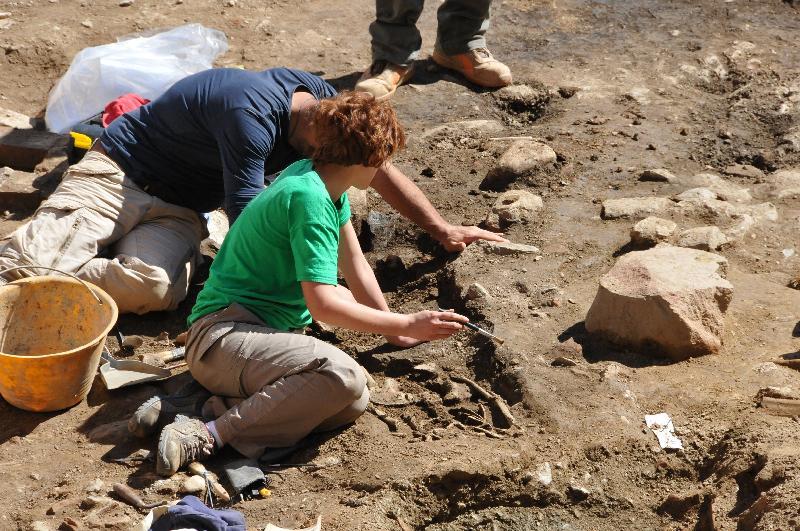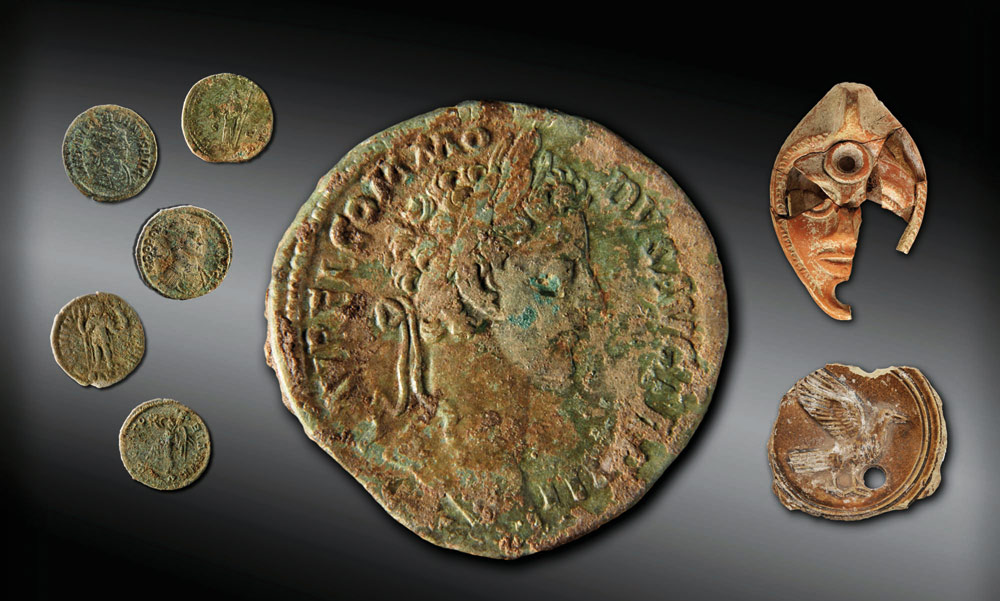Maremma Park has a historic significance through various archaeological evidence, covering a huge variety of periods.
Prehistory
First attestations about human attendance in Maremma region are during the Lower Paleolithic, about 500.000 years ago. In the area of the Park the first signs of human attendance are of 50.000 years ago (Medium Paleolithic), next to the last ice age (Wurm ice age, 90.000 years ago), and they are about the Neanderthal man (Homo sapiens neanderthalensis). Along the sides of the Uccellina hills there are different caves, someone near the ground, someone higher, and so hard to reach. Some of these caves have many finds, which attest ancient human activities. The main discovered locations are three: Fabbrica Cave, close to the Scoglietto irrigation canal, with finds of Medium and High Paleolithic. Golino Cave, at north of Talamone, which had in origin a rich finds deposit, but it has been destroyed during the works of 1865 and of 1912. In this cave some finds of Medium Paleolithic have been finden. Scoglietto Cave, which is in Scoglietto location, where the more ancient level of finds is about Eneolithic cultures.
From the Iron Age to the Etruscan period
Inside the Park area there aren’t important finds of the Etruscan period, but in a close area (Poggio di Bengodi) the ancient town of Talamone has been founded (VI cent. BC), famous for the finding of the Talamonaccio temple fronton, now exhibited in Orbetello, which reproduces the scene of the fighting “sette contro Tebe”.
Roman period
This period is very represented inside the Park area, thanks to the presence of different villas and ancient shops of products linked to the commerce of that period, which used the Aurelia way and the Ombrone river as connections ways. There is a temple of I century BC dedicated to Diana Umbronensis in Scoglietto location and a products shops complex of I cent. BC, studied by archaeologists at the moment, in Spolverino location. Here, people worked materials like glass, metals and bones.
Middle Ages
The end of the Roman Empire, in Maremma too, represents the beginning of a decline period: people leave slowly the coast areas and go to live to the hills, with the progressive passage from a type of agricultural economy to a forest and grazing economy. The Dark Ages centuries are characterised by the progressive creation of wetlands along the coast areas, which become inaccessible and boundary line areas. In this period, the ancient San Rabano Abbey was built, following the territorial and economy plan by the Papacy and the Benedictine order. In this period there are so many wars between the Councils, feudal properties and ecclesiastical orders, to have lands and castles of Maremma region. The Ombrone river mouth salt pans, the Talamone port for fishing and the Cala di Forno port for the export of wood products are very important locations for the commerce and economy. From about XI century the Saracens begin to invade these locations, so people begin to build defense buildings like the towers along the coast line and the Collecchio Castle. In the territory the towns of Pisa, Firenze and Siena fight for the power, but at the end of XIV century there is a decline of interest about the area. Due to the general economic crisis and the plague epidemic of 1368, the Uccellina area is abandoned and it became a boundary line area. This is a luck: in fact the area has maintained its originals natural habitats.
Medici Family period
Cosimo I dei Medici, from the beginning of its government, tried to led the Maremma area to a better economic situation, after a period of wars and plagues. He started a process of hydraulic reclamation of the territory with very few results. In the same time the coast line was constantly destroyed by Ottoman pirates, so the defense towers were restored and someone new was built by Medici Family. Instead between the Talamone location and Argentario area, these buildings were built by Spain Stato dei Reali Presidi. Medici family actions tried to create an important Tuscany agricultural area in Maremma, but the economic, political and hygienic difficult conditions continued to prevent the demographic growth. It was difficult to project in this area a territorial organisational set-up plan.
From Lorena Family to the Italian State
Lorena Family government was characterised by big administrative changes, as the introduction of Real Estate Registry, the legal and penal order reform, and in particular in Maremma, by some actions about the territory set-up, by measures taken to hydraulic reclaim and by measures about the improvement of social and hygienic conditions. So in this period so many hunters, shepherds, seasonal workers, Maremma cowboys, miners and woodcutters came to live here. In the middle of 1800 Granduca Leopoldo di Lorena bought and restored the Alberese farm, which is between the left side of the Ombrone river, the Aurelia highway, the Uccellina mountains and the sea, and during the next years so many funds were used to improve and to develop the farm. When Tuscany region became part of the Italian State the big hydraulic reclaim measures by Lorena family stopped, so there was a slow decline of all the area. Only after the First World War, with the passage in 1926 of the Alberese Farm to the National Opera dei Combattenti (O.N.C.) there was a new improvement of measures taken to hydraulic reclaim until 50s and 60s of XX century.


